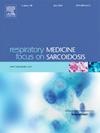胸腔镜肺结节切除术后六子觉气功联合常规呼吸康复的疗效:随机临床试验
IF 3.1
3区 医学
Q2 CARDIAC & CARDIOVASCULAR SYSTEMS
引用次数: 0
摘要
背景探讨六子觉气功对胸腔镜肺结节切除术后患者肺功能、呼吸窘迫及生活质量的影响。方法选择2023年1月至2024年6月在福建医科大学附属南平第一医院行肺结节切除术的56例患者。根据随机数字表法将患者按1:1的比例分为干预组(n = 20)和对照组(n = 20)。患者术后48 h内开始呼吸康复和六子觉训练。对照组给予常规呼吸康复训练,干预组在常规呼吸康复训练的基础上给予改良坐式六子觉训练。两组治疗时间均为1周。比较两组患者治疗前后的潮气量(VT)、1 s用力呼气量(FEV1)、FEV1/FVC、最大自主通气(MVV)、36项简短问卷调查(SF-36)和St. George呼吸问卷(SGRQ)。结果治疗后,干预组VT、FEV1、MVV下降幅度均小于对照组(P < 0.05)。干预组SF-36、SGRQ评分均显著优于对照组(P < 0.05)。结论本研究结果表明,六子觉气功作为辅助呼吸康复治疗可显著降低胸腔镜肺结节切除术后患者的肺功能障碍,提高患者的日常生活能力和生活质量。本研究为提高术后恢复提供了新的临床治疗思路。该试验已在中国临床试验注册中心(www.chictr.org.cn)注册(试验注册号ChiCTR2400093856)。本文章由计算机程序翻译,如有差异,请以英文原文为准。
Efficacy of Liuzijue Qigong combined with conventional respiratory rehabilitation after thoracoscopic pulmonary nodule resection: A randomized clinical trial
Background
To investigate the effect of Liuzijue Qigong on pulmonary function, respiratory distress and quality of life in patients after thoracoscopic pulmonary nodule resection.
Methods
Fifty-six patients who underwent pulmonary nodule resection in the Nanping First Hospital affiliated to Fujian Medical University from January 2023 to June 2024 were selected. According to the random number table method, they were divided into the intervention group (n = 20) and the control group (n = 20) with a ratio of 1:1. Patients began respiratory rehabilitation and Liuzijue training within 48 h postoperatively. The control group was given routine respiratory rehabilitation training, and the intervention group was given modified sitting Liuzijue training on the basis of routine respiratory rehabilitation training. The treatment time of the two groups was 1 week. The Tidal volume (VT), Forced expiratory volume in 1 s (FEV1), FEV1/FVC, Maximal voluntary ventilation (MVV), 36-Item Short Form Survey (SF-36), and St. George respiratory questionnaire (SGRQ) were compared between the two groups before and after treatment.
Results
After treatment, VT, FEV1 and MVV in the intervention group decreased less than those in the control group (P < 0.05). The SF-36 and SGRQ scores of the intervention group were significantly better than those of the control group (P < 0.05).
Conclusions
The results of this study show that Liuzijue Qigong as an auxiliary respiratory rehabilitation therapy can significantly reduce the pulmonary dysfunction of patients after thoracoscopic pulmonary nodule resection, and improve the ability of daily living and quality of life of patients. This study provides a new clinical treatment idea for enhanced recovery after surgery.
This trial was registered at the Chinese Clinical Trial Registry (www.chictr.org.cn) (trial registration number ChiCTR2400093856).
求助全文
通过发布文献求助,成功后即可免费获取论文全文。
去求助
来源期刊

Respiratory medicine
医学-呼吸系统
CiteScore
7.50
自引率
0.00%
发文量
199
审稿时长
38 days
期刊介绍:
Respiratory Medicine is an internationally-renowned journal devoted to the rapid publication of clinically-relevant respiratory medicine research. It combines cutting-edge original research with state-of-the-art reviews dealing with all aspects of respiratory diseases and therapeutic interventions. Topics include adult and paediatric medicine, epidemiology, immunology and cell biology, physiology, occupational disorders, and the role of allergens and pollutants.
Respiratory Medicine is increasingly the journal of choice for publication of phased trial work, commenting on effectiveness, dosage and methods of action.
 求助内容:
求助内容: 应助结果提醒方式:
应助结果提醒方式:


